Is Myanmar Safe to Travel to in 2026?
This post may contain affiliate links. If you make a purchase using one of these links, I may receive a small reward at no extra cost to you. See my Disclosure Policy for more information.
Civil unrest. Armed conflict. “Arbitrary enforcement of local laws”. “Unlawful detention of foreign citizens”...
Is Myanmar really among the most dangerous countries in the world now?
No, not really. Traveling to Myanmar is not as simple and seamless as going to Thailand or Indonesia, but it’s definitely not the same as Syria (before 2025), Yemen, or Somalia either. But is Myanmar safe?
I went to Myanmar and spent 10 days in this wonderful but tortured country. Here it is straight: Myanmar is safe for backpackers.
But there are always ‘buts’.
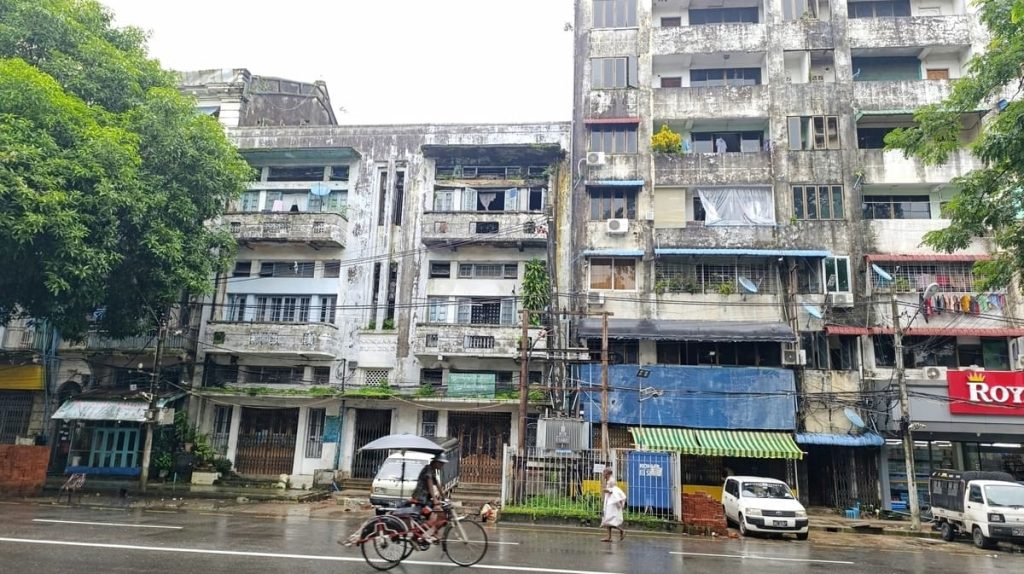
Civil War and Military Junta – should you worry?
Do you intend to grab a rifle and go fighting in the jungles? Do you plan to join insurgent armed groups in the country’s periphery and fight for independence or to overthrow the Junta?
If the answer is no, you have nothing to worry about.
The Myanmar Conflict has been going on for 80+ years in different shapes and places and for different reasons. It does not seem like it will end soon.
I do not support the Junta and its repressive military government, but if I had waited for all hostilities to end, I may never have gone to Myanmar. And I really wanted to.
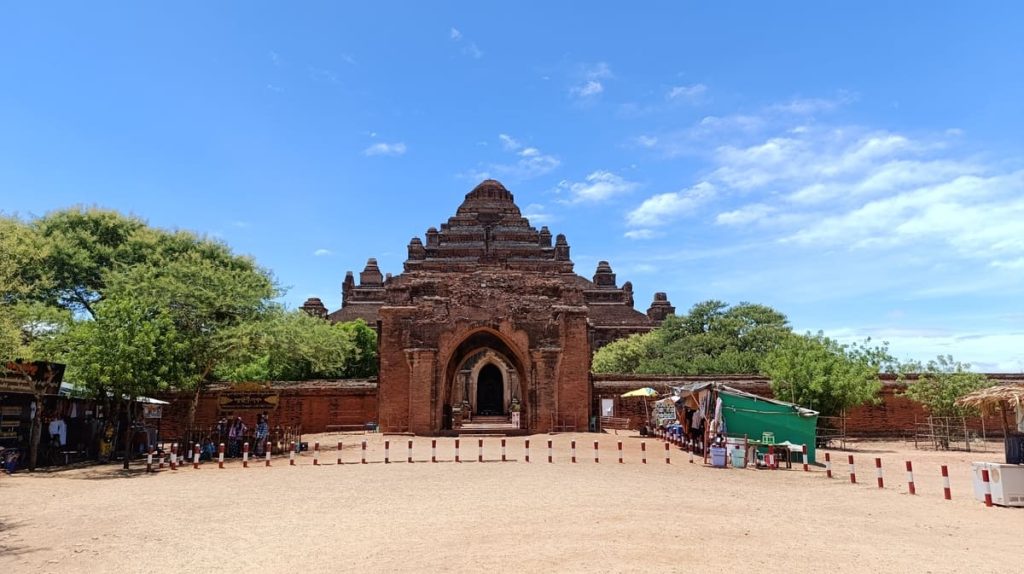
If you want to boycott Myanmar because of the Junta, fair enough. I don’t see it this way, and the ethics of traveling to Myanmar after the 2021 Coup are not so clear-cut to me. This article completely ignores the ethics question and focuses purely on safety.
See my deep dive into whether it’s ethical to visit Myanmar now.
I went to Myanmar as a backpacker, away from active war zones and forbidden areas. I wasn’t oblivious to what was happening in the country, but I wasn’t about to become an activist or a soldier either.
If you go as a genuine traveler, you needn’t worry, and the civil war will not pose a threat to you.
Checkpoints
Should you travel out of Yangon (the most probable point of entry for travelers these days), you will encounter multiple military checkpoints.
I believe the buses I was in crossed 3 from Yangon to Bagan, another 2 from Bagan to Inle Lake, and 2 more from Kalaw to Yangon.
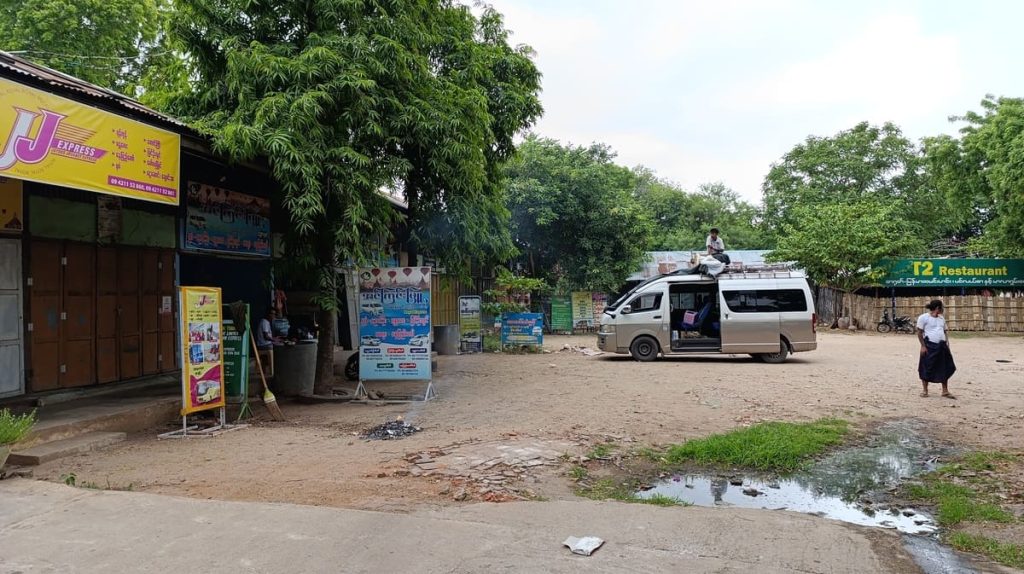
At some, it was as simple as saying my nationality and destination. At others, everyone had to get off the bus and be inspected. One time, they asked just me to get off the bus, but the whole ordeal was then over in a minute.
It was seamless. The checkpoints did not compare to the scrutiny I encountered by the peshmergas in Iraqi Kurdistan (though they were so much friendlier!).
All in all, the checkpoints do not pose a threat to travelers. Simply follow the instructions, show your passport when asked, do not take photos, and everything goes smoothly.
Discussing politics
You may get someone into a lot of trouble if you discuss the ongoing political situation in Myanmar.
Most Burmese are not fond of the current government. Many refuse to pay taxes and don’t pay their electricity bills so as not to fund the Junta.
There were street protests right after the Coup in 2021, but because the military used deadly force, it’s hard to justify protesting openly.
But talking about it is still tricky, as (similar to Orwell’s 1984 or in Communist Bulgaria, or elsewhere behind the Iron Curtain) you never know who’s listening.
Err on the side of caution and avoid discussing politics.
Why do Travel Advisories give Myanmar the highest risk score?
The US Department of State lists Burma as a Level 4 (the highest) risk country.
Australia’s Government’s Smart Traveler website also paints it red and advises against all travel.
The Government of Canada doesn’t stray far.
My own Bulgarian Ministry of Foreign Affairs (which, to be frank, I rarely check because the information there is often outdated by up to 20 years, wrong, misleading, or at best unhelpful) puts Myanmar at 5/5 on the Risk Index.
The UK stands out by giving a more detailed picture (i.e., a map) of Myanmar’s risk profile. There are even zones in green (e.g., Yangon, the Irrawaddy Delta, and Nay Pyi Taw), which effectively means not any riskier than usual.
Why? Why trust me over a government’s travel advisory?
For one, you’re already (and still) reading this.
Second, governments must avoid giving wrong advice at all costs. When things are uncertain, the safest course of action is to give the most risk-averse advice. Which is precisely what we see here.
Safe, unsafe, and restricted areas in Myanmar
Not all of Myanmar is safe. But chances are, as a genuine traveler, you will want to go to the so-called “Tourist Kite”. This is Yangon, Bagan, Mandalay, and Inle Lake – 4 locations that, when connected by straight lines on the map, form a diamond-kite-shape.
Safe Regions
The Tourist Kite is mostly safe. I went to Yangon, Bagan, and Inle Lake (skipped Mandalay mostly due to time constraints), and they were as safe as anywhere else in Southeast Asia, if not even more.
I didn’t feel any danger at any point.
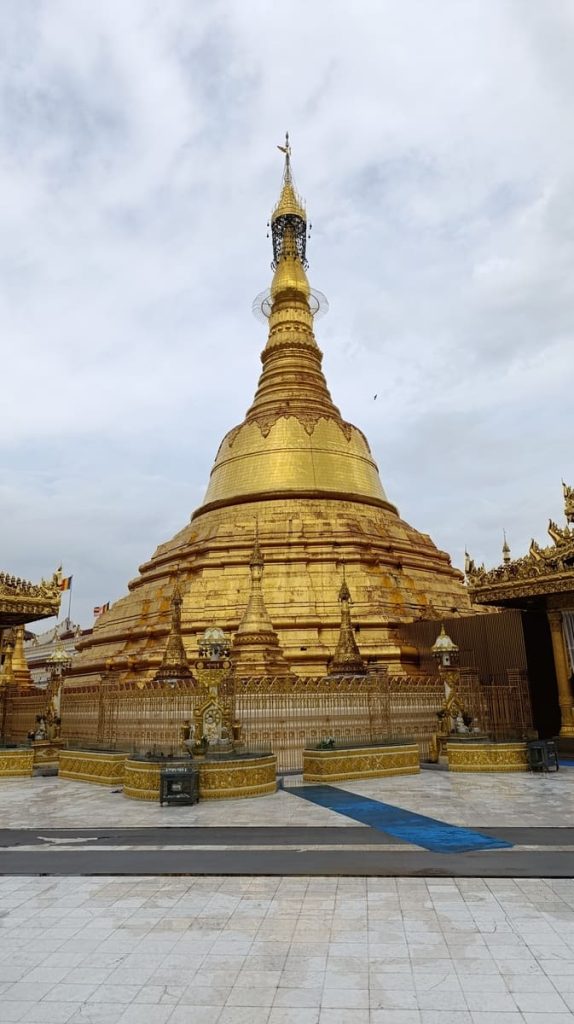
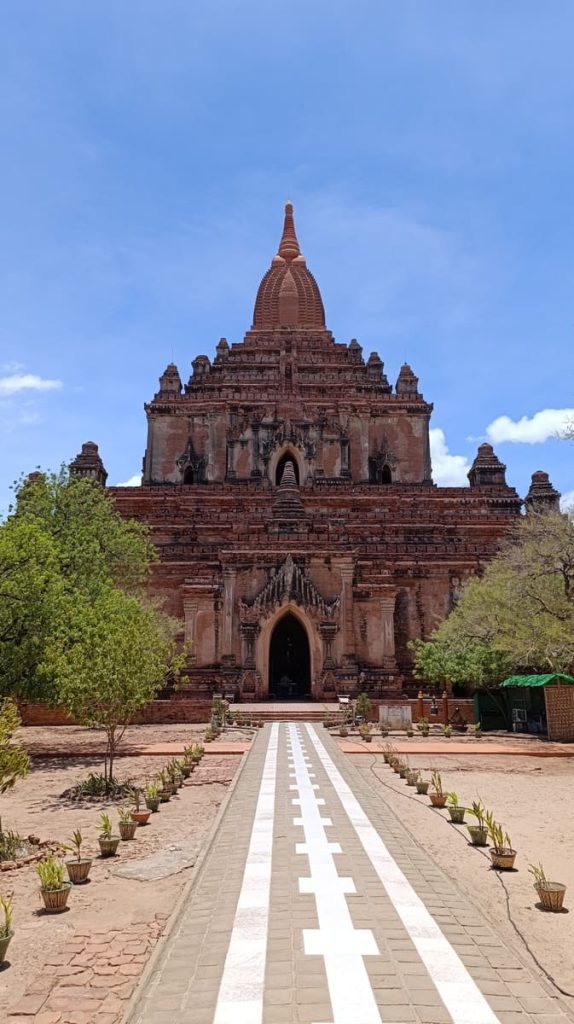

Unsafe Regions
Pretty much all peripheral regions and states in Myanmar can be considered unsafe for traveling to now. These include:
- Rakhine State (ethnic conflict has been ongoing since 2016)
- Kachin State
- Northern Shan State (Inle Lake and Kalaw are both in the southern part of Shan State)
- Sagaing Division
- Kayah State
- Kayin State
- Mon State
The situation changes literally by the day. As a rule of thumb, anything outside of the Tourist Kite of Yangon, Bagan, Mandalay, and Inle Lake is off-limits for now.
Restricted Areas
Somewhat overlapping the unsafe regions, there is a growing list of Restricted Areas that the Myanmar government keeps online.
While on paper, you will need special permission to visit these regions, in reality, the chance to receive a permit these days is slim to none.
Petty Crime is not a thing
Myanmar is a predominantly Buddhist country, and as such, most people adhere to Buddhist principles. No theft, no violence, nothing that brings bad karma. Peace, tolerance, respect, and hospitality are the name of the game for most Burmese people.
While Myanmar is often portrayed as this extremely dangerous place, rock-bottom on the list of safe countries to visit in Asia, this is because of the Civil War (and applying the same risk profile to the whole country), not petty crime.

If anything, you’re much more likely to be mugged in big cities in Western Europe than you are in Yangon or Bagan. You’re much more likely to be scammed in Vietnam than in Myanmar.
Regardless, be mindful of pickpockets. The buses of the public transport can get crowded, which is heaven for thieves. The same applies to busier streets in Chinatown and the markets in Downtown Yangon.
Know the Law – Ignorance is not a viable defense
You must observe and obey local laws. This is traveling 101.
Here are a few of the rules you need to follow in Myanmar:
1. You must stay in registered hotels and guesthouses
It all starts even before you arrive in Myanmar. On the eVisa application, you must attach a PDF of a hotel booking.
Thereafter, you must only stay in an accommodation registered with the government to host foreigners. Couchsurfing and Airbnb are illegal.
You can assume that the properties listed on Booking and Agoda are registered to host foreigners. Most of the accommodation options are such too.
What happens if you disregard this and stay elsewhere?
Most likely nothing. Say you have a friend who hosts you (Couchsurfing or not). Chances are, nobody will ever find out.
But if someone (neighbors, ill-wishers, spies) reports you, you will both be in a lot of trouble with the authorities.
2. No Drugs
That goes without saying, doesn’t it? Drugs are a bad idea abroad, no matter where.
If you come from Thailand and enjoy the occasional joint, you may let your guard down and forget about your personal-use stash. Dangerous.
If you need to try the local “drugs”, there are hundreds of tobacco and betel nut stands where you can get a hand-rolled cigarette or betel to chew. These are legal.
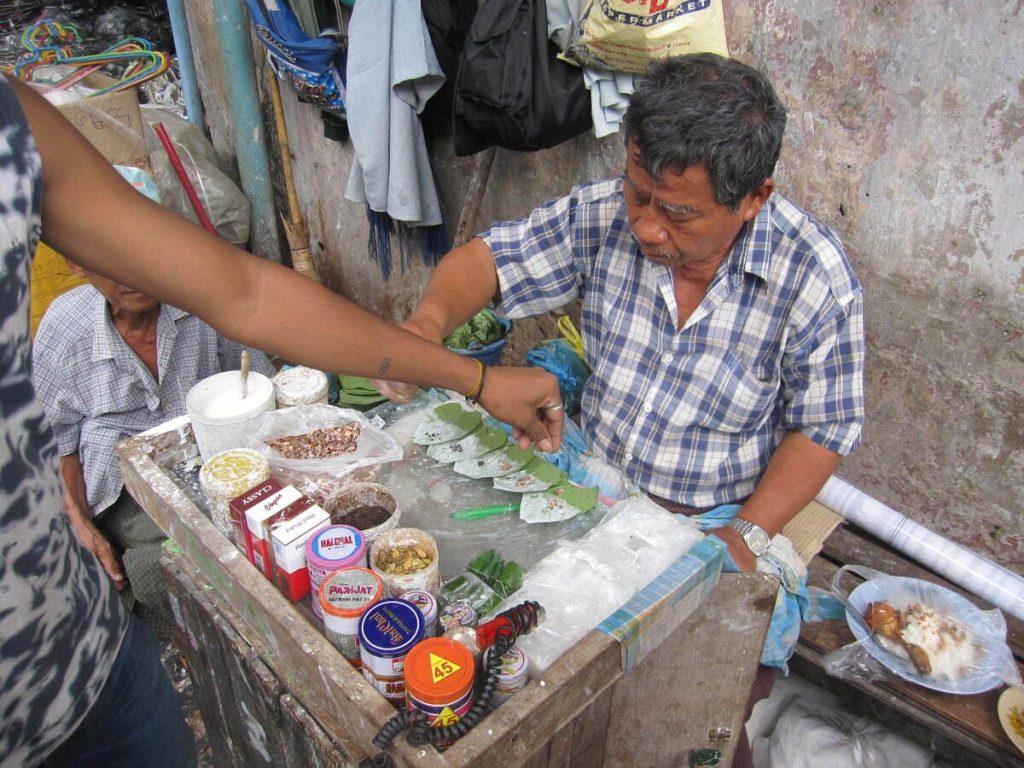
3. Don’t take pictures of military personnel, buildings, or facilities
With the Civil War going on right now, the military is increasingly paranoid of everyone and anyone. Even foreigners. Actually, more so of foreigners.
Don’t take pictures or videos of anyone from the army, in military uniform, or on duty. Do not photograph any buildings with barricades in front (usually in white and red). Do not even aim your phone towards such.
4. Respect the Buddha
Buddhism in Myanmar is not just an auxiliary-to-country-and-culture religion like how Christianity is in many states in the West today.
In Myanmar, Buddhism is an intrinsic part of the culture, interwoven into the fabric of society.
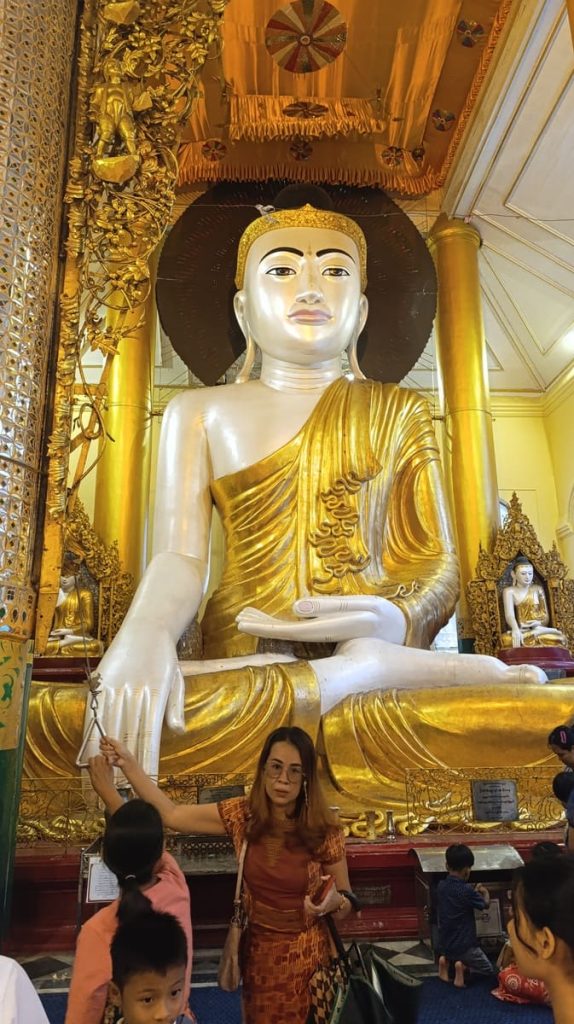
Buddha, the foremost enlightened being, the awakened leader of the people, the fully pure wisdom of the world (but NOT a god), is revered, respected, and prayed to.
You mustn’t:
- Tattoo Buddha images
- Display Buddha images on your clothes or accessories
- Disrespect the Buddha statues
- Wear shoes or socks inside pagodas and temple grounds
And in general, do what is honorable and respectful.
5. Don’t do “gay stuff.”
Not being homophobic here – it’s just that homosexuality and sodomy are illegal and punished severely. Maybe not the best country to open Grindr, you feel me?
6. Don’t become an activist there
Terrible time to voice out your support for human rights. The military in Myanmar doesn’t care.
Don’t join demonstrations, don’t go to protests, don’t post criticisms of the Junta on social media.
As a foreigner, you already stand out from the crowd. Easy target for arrest or more.
7. Mind the Curfew
There are curfews in most regions of Myanmar, including Yangon and Mandalay. The “must be indoor” times can change.
When I was in Yangon, the curfew was between midnight and 4 AM. To be honest, looking out of the balcony after 10 PM, there is little reason to be out on the streets in Yangon at night. Moreover, some areas are literally pitch black because of the electricity shortage.
The popular 19th Street has street bars and food stalls open until about 11 PM.
If you want to experience the nightlife, you can. The curfew forbids you from being outdoors, but inside a bar, you’re fine. Yangonians party through the night. Some popular clubs with action overnight include:
Just make sure to return to your hotel before midnight or after 4 AM.
What are the real dangers in Myanmar?
So if it’s not the Junta or the Civil War, then what dangers exist in Myanmar for backpackers and tourists alike?
Diseases
Catching something is perhaps the biggest risk in Myanmar right now.
With inflation, the quality of life deteriorates, leading to poverty and lowered hygiene standards.
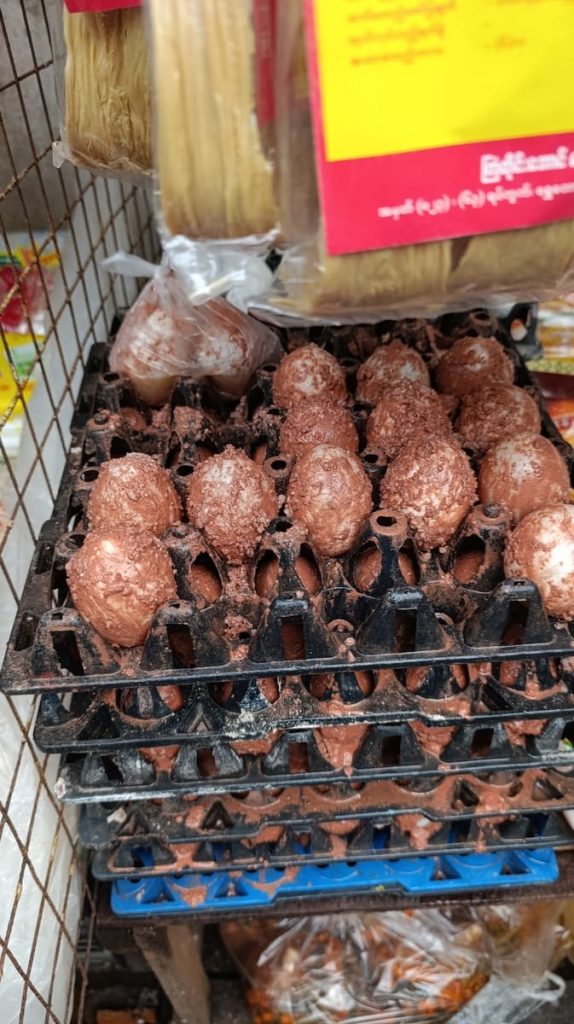
A cholera outbreak was registered in Yangon’s suburbs in July 2024. Dengue is an ever-present danger, and so is malaria. Floods and persistent rains make the situation worse.
What can you do?
- Get vaccinated. There are vaccines against dengue and hepatitis A.
- Wash your hands often and/or use a hand sanitizer. Many of the so-called “diseases of poverty” are caused by a lack of hygiene (i.e., dirty hands).
- Only eat at places where others eat. While this isn’t a fool-proof method (food poisoning can occur in places with many customers too), it filters the establishments that locals like and, by extension, where they have historically eaten without problems. Nobody goes back to a place where they ate bad food.
- Don’t save food for later.
- Drink only bottled water.
- Carry a medicine pack with the most important over-the-counter medications. Think paracetamol, aspirin, activated carbon, oral rehydration salts, anti-malaria pills, etc.
- Apply mosquito repellent.
- Get comprehensive travel insurance that will cover you even in Myanmar. SafetyWing will cover you in Myanmar (Note that insurance is no longer necessary for a visa or to enter the country. The insurance provided by the Myanmar government is no longer a prerequisite to entry).
Stray dogs
Yangon is infamous worldwide for its stray dog problem. Mass culls have produced limited effects. At night, rabid dogs control the streets.
In Central Yangon, you will probably be okay. I didn’t see many stray dogs in Chinatown or around Shwedagon Pagoda. And there are always people around who will help.
But if you venture further out, especially after dark, be on the lookout for dogs.
To defend yourself, pick up a stone or a large stick and threaten the dogs. If there is none around, pretend to pick up one and taunt them. Dogs intrinsically realize you’re the bigger predator. They will attack if you show them you’re weaker, but otherwise will yield and back away.
Other wildlife
If you go to the countryside, you may encounter a variety of wild animals.
Now, the chance of meeting a big cat or an elephant is minuscule. But you may get face-to-face with a monkey or a snake.
Monkeys’ bites are dangerous – they carry various diseases like rabies, which is deadly if left untreated.
Your best bet is to never get bitten in the first place – do NOT look a monkey straight in the eyes, and if by any chance it steals something off you, don’t chase it. If it’s food, forget about it. If it’s a personal possession, the monkey will eventually get bored and drop it somewhere.
For snakes, again, prevention is the best defense. Step loudly and proudly – you want the snakes to be aware of your presence and go away. This advice is handy in Bagan when going around the temples.
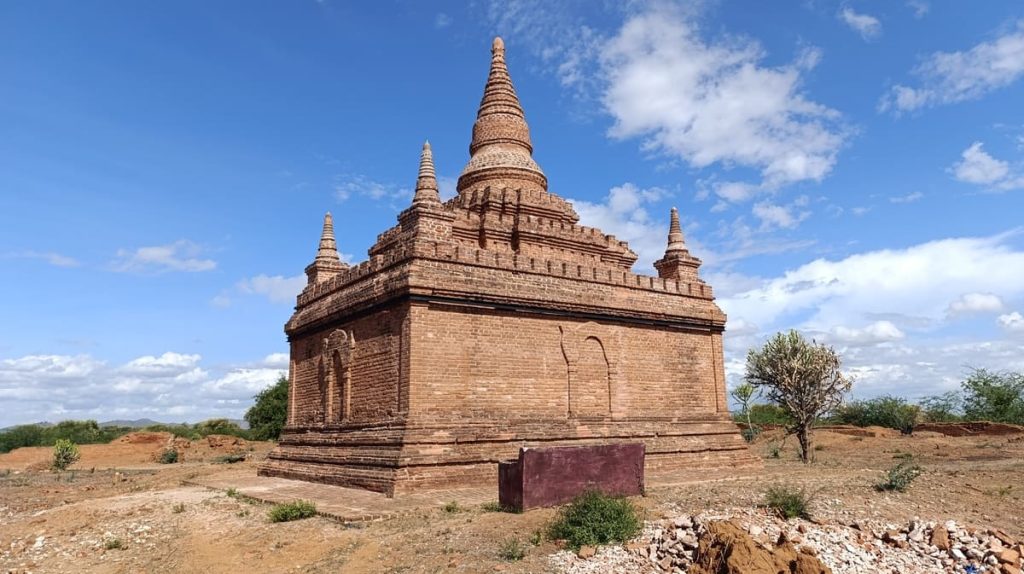
Electrocution
The electricity in Myanmar is unreliable. There are frequent blackouts. You may think that electrocution occurs only when you touch stuff you shouldn’t (like the socket), but really, it can happen anywhere to anyone.
Especially in the rainy season when streets get flooded, and everything is wet. Water + electricity = death. This boy in Yangon, for example, was unfortunate enough to walk through a puddle of water with a live wire inside.
Be mindful of your surroundings and watch out for cut or loose wires, especially after a strong storm or heavy rain.

Being in the wrong place at the wrong time
I don’t want to paint all of Myanmar as a completely safe place. It isn’t – a civil war is going on as we speak!
The situation is unpredictable. Anything can happen. You travel at your own risk.
Being in the wrong place at the wrong time can mean many things. I cannot list all the dangers that traveling within a country, entangled in conflict, may entail.
Be vigilant, risk-averse, stay sharp, and avoid sticking out more than your skin already does.
Simon’s travel advisory: Is Myanmar Safe for backpackers?
Yes, Myanmar is safe for backpackers if you stick to the main tourist areas of Yangon, Bagan, Mandalay, and Inle Lake.
Those saying that Myanmar isn’t safe aren’t necessarily lying. Myanmar can be extremely dangerous if you go to the wrong areas or if you break the law. But you won’t do that as a genuine tourist, will you?
Think about it this way – the fratricidal Military Junta desperately seeks international recognition and foreign money – things tourists bring. Its interests lie in at least pretending that everything is alright and well in Myanmar at the moment.
It’s not, but for short backpacking trips to the most famous places, it’s alright enough.
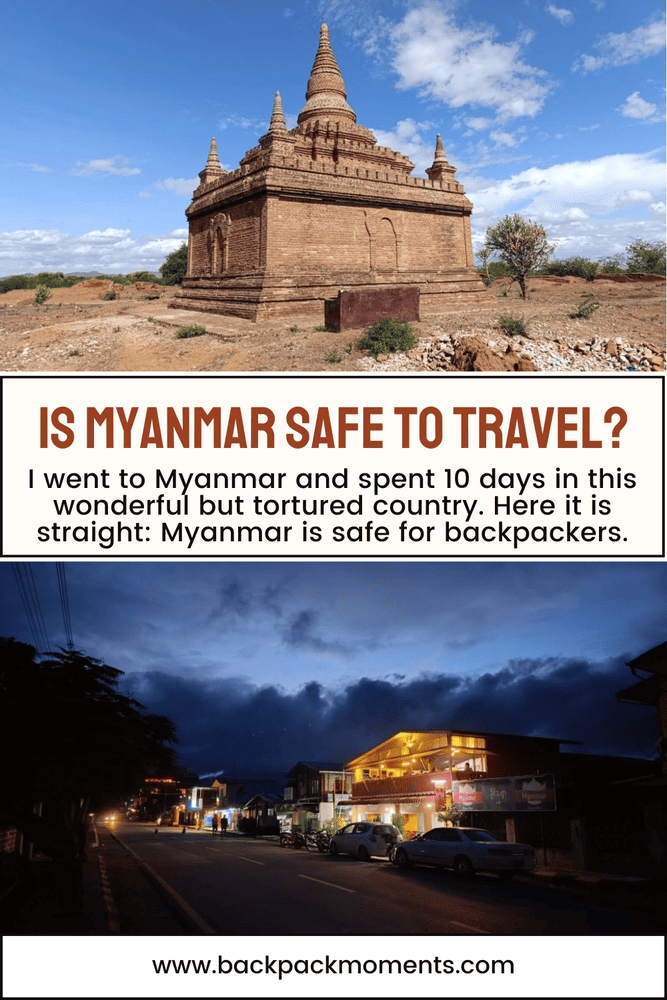
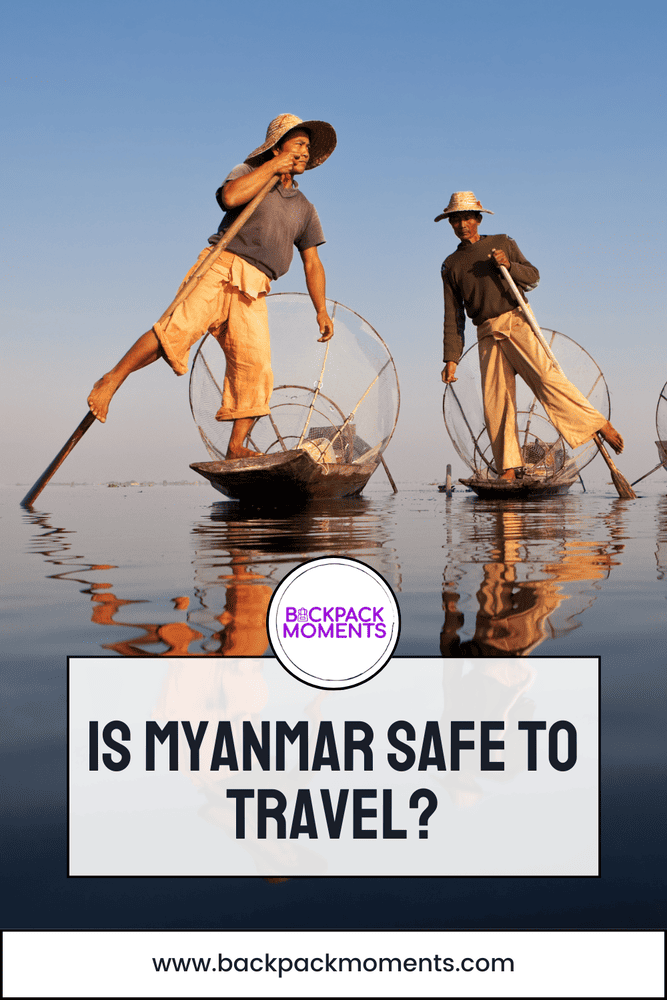


Hey Simon!
many thanks for sharing!
I’m visiting Myanmar next month; landing in Yangon, is it better first heading to Inle and then Bagan or vice versa? My departure flight is from Mandalay
Hi!
It doesn’t matter much – the three make a triangle with equal sides (about 10h journeys each) so it’s entirely up to you.
-S.
Hi Simon, amazing post thanks! Quick question – my gf and I thinking of going two weeks over Xmas. Is Mandalay still worth going to or has the earthquake ruined it? Also Hpe A wasn’t mentioned, would you recommend it or avoid? Thanks, Fab
I don’t know Fab. I didn’t go to Mandalay for lack of time (would’ve been more traveling than sightseeing). I saw pics of the earthquake’s damage and it was devastating. Nonetheless, there is often beauty in perseverance and survival as well.
As for Hpe A, I’ve never heard of it.
-S.
What ride-hailing apps are popular over there ?
Like the rest of Southeast Asia, “Grab” is king.
This is incredibly helpful! I’ve been searching for reliable resources on Myanmar’s current situation and what it’s like to visit as a tourist. Thank you for sharing these valuable insights.
Hi Simon, thanks for this incredibly insightful and helpful report on your trip to Myanmar. Really appreciated your objective overview of the situation, as well as your thorough explanations. Would you also be able to comment a bit about your experience with electricity, cell phones, internet, eSims vs. local providers, and VPN’s and anything related to staying connected to the outside world? Or perhaps write an additional post focusing on those things? You might have mentioned it somewhere, but I seem to have missed it if you did. TIA!
Hi Nick,
Yes, of course. I will briefly outline them here:
1) Electricity. It’s patchy, even in Yangon. Bigger hotels have their private generators and you won’t feel it. Smaller won’t and will have periods without and periods with. It’s worse in smaller towns outside of Yangon. For example, in Bagan, the public grid electricity was on less than 8 hours of the 24-hour day.
Regardless, it’s not nearly as serious as it seems because of the diesel generators that most establishments have.
2) Mobile internet. The easiest is to buy at the airport. I, as a budget-savvy guy, avoid doing anything at airports. But then in Yangon not a single shop wanted to sell me a tourist SIM card. I’ve read other reports of people buying sim cards in Yangon but that wasn’t my experience. So I just went without mobile internet for the duration of my stay. Not a big deal to be honest, I do it all the time nowadays. Takes you away from the phone at least while outside the house.
eSIMs – I don’t know. The most popular provider (Airalo) does not have Myanmar as an option. If your favorite provider has it – go for it.
3) Wifi. The internet speeds in Myanmar are generally okay. Not stellar but good enough for most daily tasks, including watching a few videos. The thing is, the internet is heavily limited and some pages do not open. You won’t see a notification of being blocked, it will just load forever, so it’s really frustrating to use the internet without VPN.
4) For VPN, I use the free plan of ProtonVPN. It’s really basic and for most intents and purposes does the job. However, Myanmar is special yet again. Many VPNs simply don’t work. This includes free plans AND paid plans for some of the biggest providers on the market. It’s a hit or miss really. With ProtonVPN, I would connect to a random network (the only way possible on the free plan) and it wouldn’t work (which I would only find out as the pages would take ages to load), then I would connect to a new random one, try again, so on and so forth, until it works. Usually, it takes up to 3 attempts max to load a certain page. But for a different page/app, it may need a new VPN connection yet again. It’s very frustrating trying to work online in Myanmar.
Basically, there may be a VPN provider who works like a charm but I just don’t know which.
Hope that helps,
Cheers,
Simon
Simon — Thank you for taking the time to respond. This information is very helpful!
Great article. I.have one question. You did describe the typical tourist route, but what about the Islands? Apparently Myanmar has beautiful islands with great beaches.
– Do you know if they are safe?
– Any idea if you can fly there easily as a backpacker foreigner?
I’m just starting my research, thanks for any inputs.
You’re probably referring to the islands in the Andaman sea, part of the Tanintharyi Region. I don’t have personal insights to share – haven’t been there. As far as I know, the border at Kawthoung – Ranong is open for foreigners crossing from Thailand so it should be relatively safe.
However, if you’re referring to the islands off the coast of Rakhine State, they are NOT safe, as this State has been embroiled in active ethnic conflict for years now. The Arakan Army recently took control of it and is trying to establish a state within the state. Not the time to go there now.
Most of my points about safety in the article apply for all the regions.
As to how to get there – a quick search shows me regular flights from Yangon to Kawthoung and from there you can take a ferry to an island of your choosing, local permissions and rules apply, of course.
-S.
Great, thank you for your infos. I’ll do some research on those places and see if its worth it and what’s doable. Cheers. Nelson
Thank you for your infos. I will do some research on what’s doable, and worth it… great, thanks. Cheers. Nelson
Are there any night buses running between Yangon and Bagan/Mandalay?
Yes, there are multiple companies that offer it. I even have an article about the overnight bus from Yangon to Bagan.
I have been to Myanmar in 2019 and loved it! Are there many other tourists around the typical hotspots like inle lake? Or are you alone at most of the places right now?
Barely any tourists in Myanmar now. Mind you I was there last year (2024) but things haven’t changed at all since.
Great article. Thanks
Thanks for having shared your experience. You can also have a map for security in the French Diplomatic website that is updated quite often if you would like to benchmark, seems a bit less updated than the UK one ‘ though: https://www.diplomatie.gouv.fr/fr/conseils-aux-voyageurs/conseils-par-pays-destination/birmanie/#securite
I was in Myanmar for a short stay in the last week of April (so two and a half months before you) and I fully agree with your considerations…
I have only been to Yangon and Bago (a very beautiful city with many temples as usual in Myanmar…and a Mon city, therefore not Burmese) but I always felt very safe and free to wander..very very few Western tourists, as Myanmar citizens themselves remarked (“since the coup” in their words)…in my opinion Myanmar is enormously and unjustly blackened (there are serious problems, of course, but many foreign offices are terrorizing travellers…my Foreign Office, the Italian one -I am Italian- strongly advises against any travel in Myanmar but I see here that yours, Bulgarian, and the US one are even more strong-worded !)…I enjoyed very much Myanmar and I hope to be able to return soon for a longer trip (to see more), because Myanmar and the people of Myanmar have taken my heart !
P.S 1 I witnessed many electric blackouts me too, even in central Yangon !
P.S 2 I flew from Kuala Lumpur (Myanmar Airways International) and I changed Malaysian Ringgit (MYR) at the Yangon airport..got a discreet and acceptable rate (I was afraid that in the city I could have problems in changing Ringgits that I wanted to get rid of)